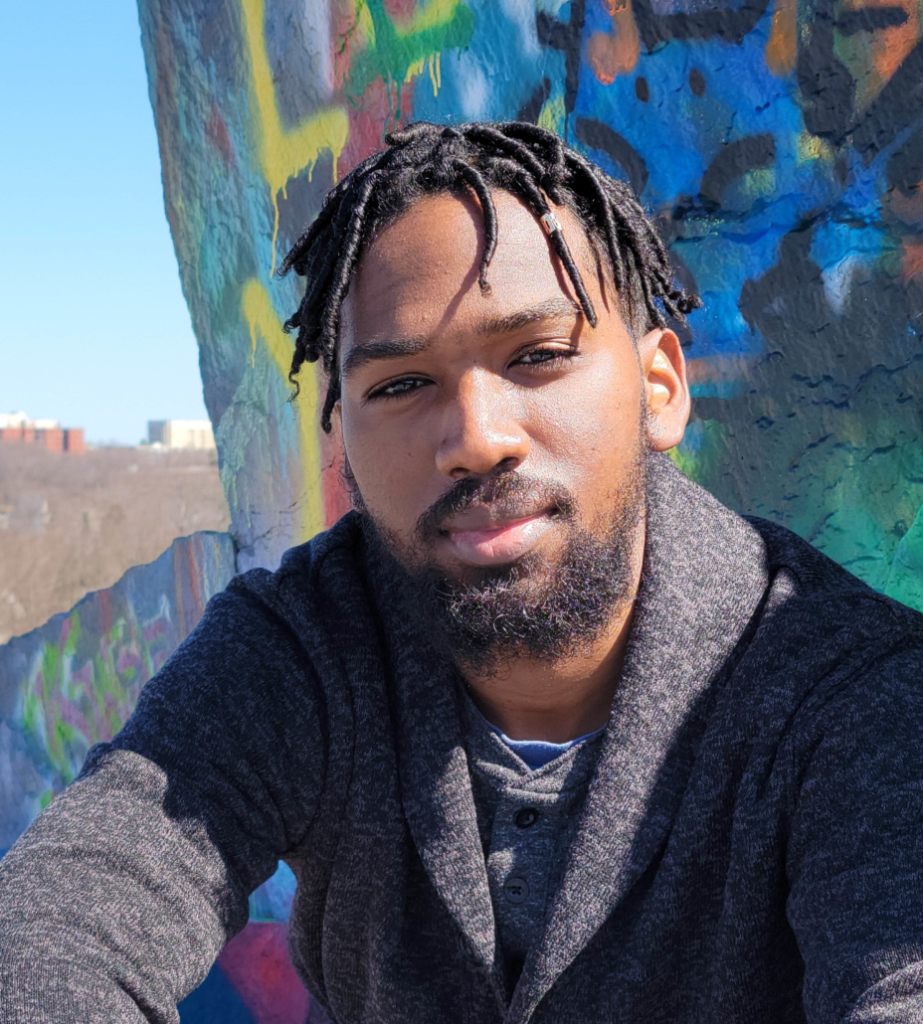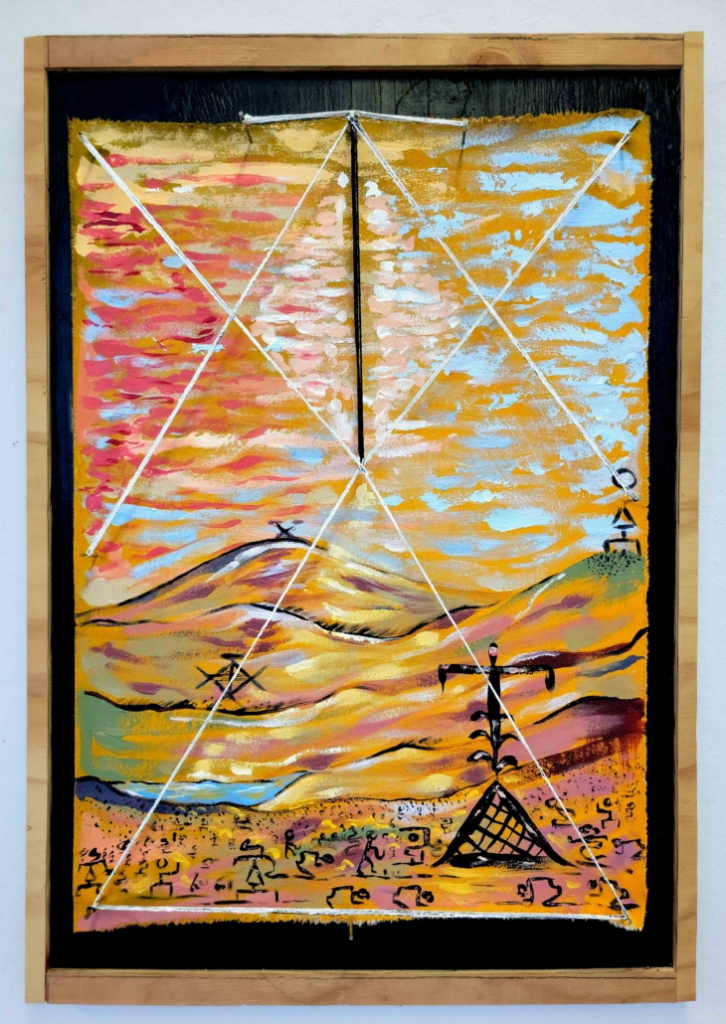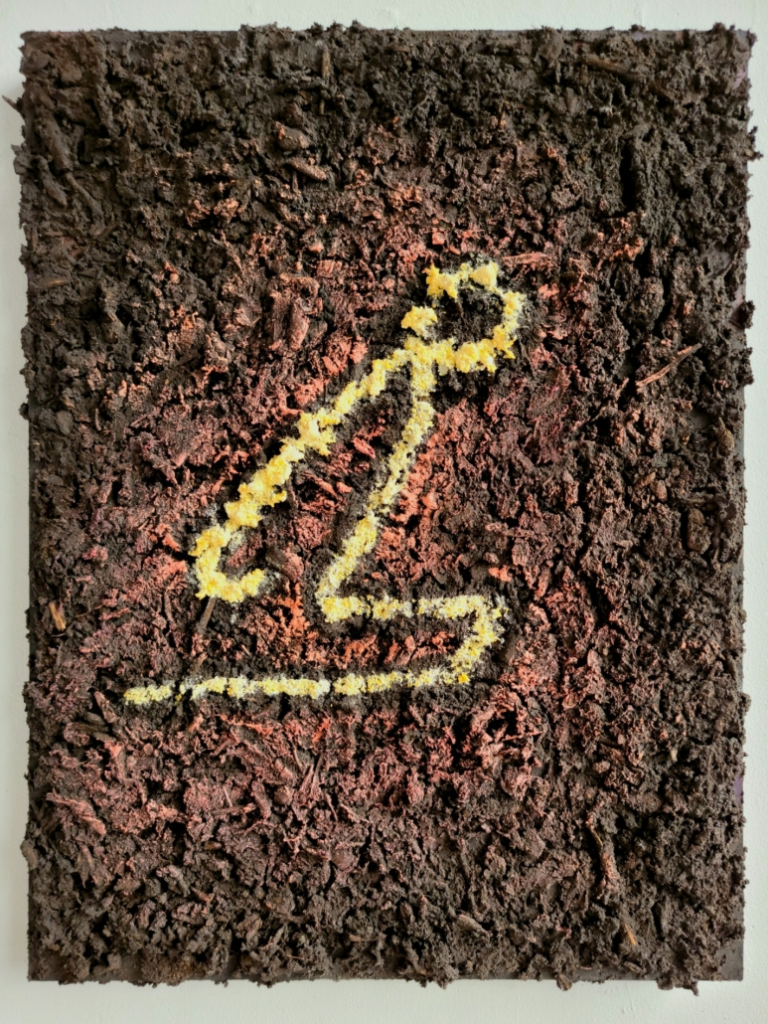Can you tell us a little about yourself?

My name is Mosheh Tucker. I was born and raised in Boston, MA. I attended Lesley University for my BFA and Boston University for my MFA. I come from African-American and Haitian lineage; my mother is a first-generation Haitian-American, and my father’s family is African-American. Alongside my passion for the arts are my passion for technology and the sciences. I’m also vegan, so that definitely plays a big role in my day to day.
What kind of work do you make?
My work has been very experimental. I use a lot of found materials like scrap wood, fabric, and sometimes even metal. I cut what I need to cut and build what I need to build to create an ideal surface for the project at hand. I make paintings and installations, and I have used the idea of ritual to mold one into the other, creating paintings that can be seen as installations as well. My paintings exist as a kind of vessel at this point.
What concepts does your art explore?
images of work



My practice started as an extension of the research I’ve done on identity development within African-Diasporic communities, and became a visual universe of the African-Atlantic’s past and possible future. This transformation began with my exploration of African-American folktales and was expanded by my work surrounding the Haitian Vodou practice. I developed an interest in Gods/deities brought to the Atlantic by embondaged African people and our current relationship with them. Coming from both African-American and Haitian lineage has exposed me to a diverse range of spiritual practices. This exploration has also leaned into my use of language; I created a pictographic script that I now call the African-Atlantic script. This script serves as a kind of record for conditions of the Black body and functions as an actual written language that I use to communicate things that are difficult to communicate, as well as a way to write letters to various African-Atlantic Gods. I’ve used all of this content to create a world where the Gods have to exist alongside African-Atlantic people. I call it a “Black World of Mine.” Much of my work has become moments of confrontation, honor, and critique within that space. Concepts like ritual and world-building have made their way into the foundation of my making.
Why did you apply for Gallery 263’s Artist-in-Residence program?
Being fresh out of graduate school has motivated me to constantly seek out spaces and opportunities to continue working within a constructive space. I’ve heard a lot about Gallery 263 and its passion for centering community and innovative artists, so upon learning about this opportunity, I jumped at it.
What do you hope to accomplish during your residency?
I hope to continue the expansion and building of my practice and to see how I could use the space provided. I also look forward to showing my work to the Gallery 263 community and visitors.
What are your favorite materials to use? Most unusual?

As of now, my favorite materials to use are wood and acrylic. I used to prefer oil paint, but acrylic followed me into my experimentive endeavors. Acrylic endured.
As for my most unusual materials, that would probably be dirt. I’ve also used dried cornmeal. Dirt has been used for floor installations, as well as my paintings. I have mixed dirt with clear gesso to create a few of my paintings, and dried cornmeal has been used in the same way, but for the detail on top of the dirt.
What historical and contemporary artists inspire you?
Early in my art career: Lois Mailou Jones, Henry Ossawa Tanner, and Meta Warrick Fuller
Figurative Influences: Patrick Earl Hammie, Mario Moore, Barkley Hendricks, Kehinde Wiley, Lucian Freud, Alice Neel, and Kara Walker
Some motivations for my current work: Wosene Worke Kosrof, Xu Bing, and Tschabalala Self
When did you decide you wanted to be an artist?
My older brother is an artist as well. We both got into the arts because of my father, who dabbled in the occasional painting and drawing. I’ve been making work since I was very young. I didn’t want to be an artist initially. I did it because I couldn’t help it; any opportunity I had I was drawing. I couldn’t stop. I initially wanted to be a neurosurgeon. I’ve always been into the sciences, and I still am. It wasn’t until high school where my passion for the arts began. I started with Art Studio 1, then advanced to 2, 3, and then Art Studio 4 honors/Portfolio. During my junior and senior years, I began creating political work that started conversations I felt needed to be had. I then realized what art can do and how to build my skills to start more complicated conversations. I ended up applying to art schools for undergrad, where I began building my practice, which at the time consisted of large-scale oil paintings. It’s crazy how much my work has changed and evolved.
To Wade in Troubled Waters, a solo showcase by Mosheh Tucker, is on view to the public at Gallery 263 from August 16 to August 28, 2021.